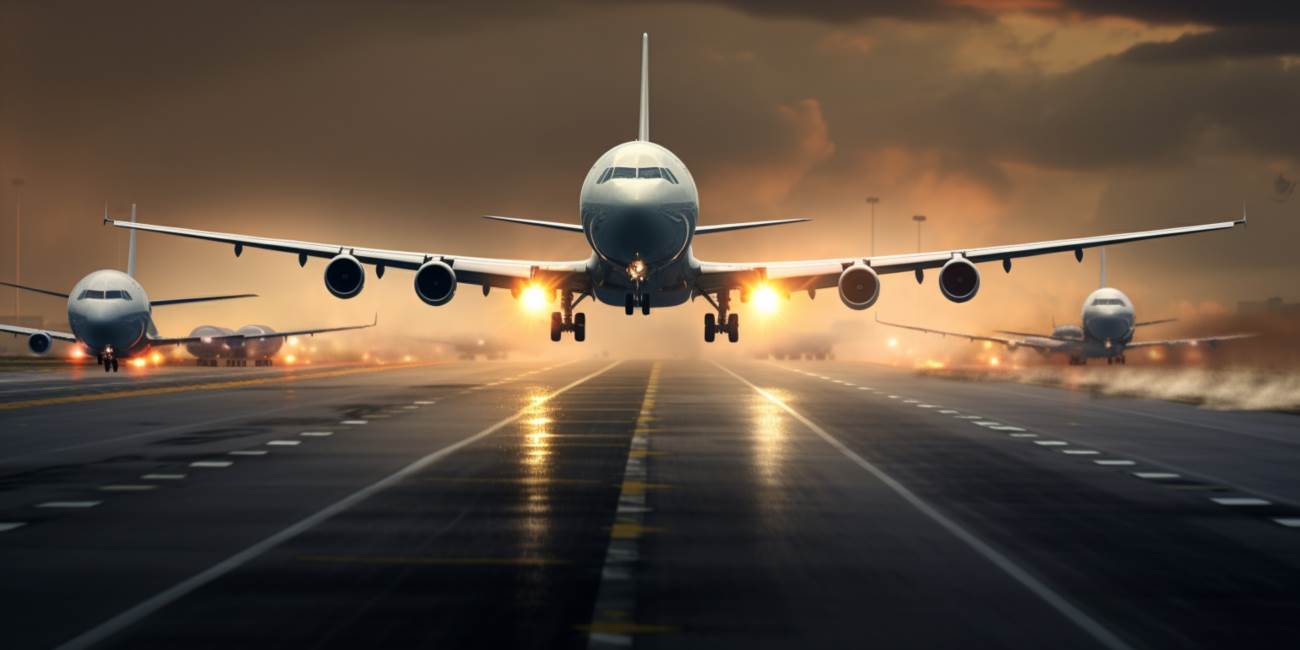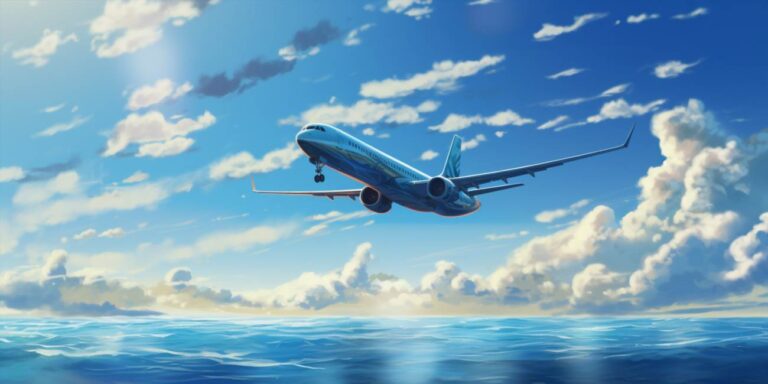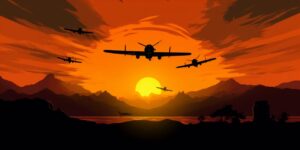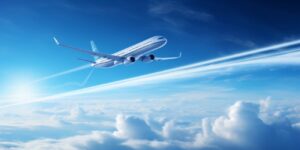Firstly, it’s crucial to understand that the speed of an aircraft can vary significantly depending on its type. Commercial airliners, the giants of the sky responsible for ferrying passengers around the globe, typically cruise at speeds ranging from 500 to 600 miles per hour. These colossal machines, with their sleek designs and powerful engines, cut through the air with impressive efficiency.
For those who find themselves in smaller, private planes, the experience can be quite different. General aviation planes, such as propeller-driven aircraft, generally operate at lower speeds compared to their commercial counterparts. Their cruising speeds often fall within the range of 100 to 200 miles per hour, offering a more leisurely pace for those who enjoy a scenic journey.
One interesting fact about how fast a plane goes relates to the speed of sound, often referred to as Mach 1. When an aircraft surpasses the speed of sound, it enters the realm of supersonic travel. The iconic Concorde, a supersonic jet that graced the skies from 1976 to 2003, could reach speeds of more than twice the speed of sound, exceeding 1,300 miles per hour. Unfortunately, despite its remarkable speed, the Concorde era came to an end due to economic and environmental considerations.
It’s worth noting that military aircraft often push the boundaries of speed in ways that commercial planes do not. Fighter jets, designed for agility and rapid response, can achieve speeds well beyond 2,000 miles per hour. These marvels of engineering showcase the extreme capabilities that can be achieved when speed is a top priority.
For a comprehensive view of how fast a plane goes, let’s break down some of the key speeds associated with different types of aircraft:
| Aircraft Type | Cruising Speed |
|---|---|
| Commercial Airliner | 500-600 mph |
| General Aviation Plane | 100-200 mph |
| Supersonic Jet (Concorde) | 1,300+ mph |
| Fighter Jet | 2,000+ mph |
As we marvel at the incredible feats of aviation, from the graceful gliding of commercial planes to the thunderous roars of fighter jets breaking the sound barrier, it’s clear that how fast a plane goes is a captivating aspect of modern travel.
How fast do passenger planes travel on average
Passenger planes are marvels of modern engineering, soaring through the skies at astonishing speeds to connect people and places around the globe. The average speed of passenger planes varies depending on the type of aircraft, but they generally cruise at subsonic speeds, typically between 500 and 600 miles per hour.
One of the fastest passenger planes in operation is the Boeing 747, known for its iconic hump-shaped upper deck. This jumbo jet has a cruising speed of approximately 570 miles per hour, making it a reliable choice for long-haul flights. Another notable mention is the Airbus A380, with a similar cruising speed, offering passengers a smooth and efficient travel experience.
It’s fascinating to note that the speed of passenger planes is not just about getting from point A to point B quickly; it’s also a result of meticulous aerodynamic design and engineering precision. The sleek, streamlined shapes of these aircraft reduce drag, allowing them to cut through the air more efficiently.
For those interested in a more granular understanding of plane speeds, it’s essential to differentiate between takeoff, cruising, and landing speeds. Takeoff speeds can range from 150 to 180 miles per hour, depending on the size and type of the aircraft. Once airborne, planes reach their cruising speeds, where the magic happens and passengers experience a sensation of relative calm inside the cabin despite the high velocity outside.
Now, let’s delve into some specific examples to highlight the diversity in passenger plane speeds. The Embraer E145, a regional jet used for shorter flights, has a cruising speed of around 500 miles per hour, catering to the needs of regional air travel. On the other hand, the Concorde, a supersonic jet that operated from 1976 to 2003, shattered speed records by flying at a mind-boggling twice the speed of sound.
For a more visual representation, here’s a comparison table showcasing the cruising speeds of some popular passenger planes:
| Aircraft Model | Cruising Speed (mph) |
|---|---|
| Boeing 747 | 570 |
| Airbus A380 | 570 |
| Embraer E145 | 500 |
| Concorde | Supersonic |
These numbers showcase the incredible range of speeds at which passenger planes operate, each tailored to meet the specific demands of their intended routes and purposes. As technology continues to advance, we can expect even more innovations in aircraft design, pushing the boundaries of speed and efficiency in air travel.
What is the fastest civilian plane currently flying

In the world of aviation, the pursuit of speed has always been at the forefront of technological advancements. The fastest plane currently soaring through the skies is the mesmerizing SR-71 Blackbird, a legendary marvel that has held the record speed for decades.
Stepping into the shoes of this aeronautical legend, the SR-71 Blackbird boasts a breathtaking record speed of a mind-boggling 3,529.6 kilometers per hour, making it the undisputed champion in the realm of aviation. This supersonic titan is not merely an aircraft; it’s a testament to human engineering pushing the boundaries of what’s possible.
What sets the SR-71 Blackbird apart is not just its top speed, but also its jaw-dropping acceleration. Powered by cutting-edge engines and a design that defies conventional aerodynamics, this aircraft can accelerate to its phenomenal top speed with unparalleled efficiency. It’s a symphony of power and precision, propelling itself into the annals of aviation history.
Let’s delve into the numbers that make aviation enthusiasts’ hearts race. The SR-71 Blackbird achieves its record speed thanks to its twin Pratt & Whitney J58 engines, each producing an astonishing 32,500 pounds of thrust. The sleek, streamlined design minimizes drag, allowing the aircraft to slice through the air with minimal resistance.
To put the record speed into perspective, imagine covering the distance of an entire football field in less than a second. This extraordinary velocity is not just about breaking records; it’s a testament to the relentless pursuit of pushing the boundaries of what’s possible in the field of aviation.
While the SR-71 Blackbird may hold the crown for the fastest plane at the moment, it’s worth noting that advancements in technology continue to pave the way for even greater feats. The pursuit of speed in aviation is an ongoing journey, with each innovation propelling us closer to new frontiers.
What factors affect how quickly planes can travel
When it comes to the speed of airplanes, several factors play a pivotal role in determining how swiftly they can traverse the skies. One of the key elements influencing aircraft speed is the altitude at which they operate. As planes ascend to higher altitudes, the air density decreases. At higher altitudes, the air is thinner, allowing planes to encounter less resistance, which can significantly boost their speed. Pilots strategically choose optimal cruising altitudes to capitalize on this phenomenon.
The interplay between airplanes and the wind is another critical aspect affecting their speed. Wind can either serve as a powerful ally or a formidable adversary, depending on the direction and intensity. Headwinds, blowing against the aircraft’s forward motion, can impede its speed, requiring more power from the engines to maintain velocity. Conversely, tailwinds, blowing in the same direction as the plane, can provide a helpful push, augmenting its speed and fuel efficiency.
Furthermore, the weight of an aircraft plays a substantial role in its overall performance. Heavier planes generally require more power to achieve and sustain higher speeds. Conversely, lighter aircraft may find it easier to accelerate and maintain faster velocities. This weight consideration extends beyond the aircraft itself and includes factors such as fuel load and cargo. Pilots carefully calculate and manage weight distribution to optimize speed and fuel efficiency.
Engines, often regarded as the heart of an aircraft, are undeniably a cornerstone in determining how quickly planes can travel. The power and efficiency of the engines directly impact acceleration, cruising speed, and overall performance. Modern aircraft are equipped with advanced propulsion systems designed to maximize thrust while maintaining fuel efficiency. Pilots skillfully manipulate engine settings based on various factors, including altitude and weight, to ensure optimal speed throughout the journey.






